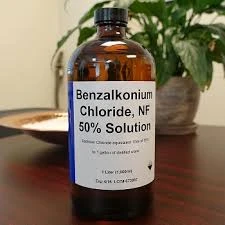polyacrylamide water treatment
The Role of Polyacrylamide in Water Treatment
Water is a crucial resource for humankind, yet the increasing pollution and contamination of our water bodies pose a significant threat to both environmental sustainability and public health. As industries and populations expand, the demand for effective water treatment solutions has become more pressing. One such solution that has gained prominence in recent years is the use of polyacrylamide (PAM), a synthetic polymer that plays a vital role in the water treatment process.
Understanding Polyacrylamide
Polyacrylamide is a water-soluble polymer derived from acrylamide monomers. It is known for its ability to flocculate and coagulate suspended particles in water, making it an essential player in various water treatment applications. When PAM is introduced into water systems, it interacts with suspended solids and promotes their aggregation into larger flocs. This aggregation is a crucial step in the separation of impurities from water, allowing for more efficient purification processes.
Applications in Water Treatment
1. Municipal Water Treatment In municipal water treatment facilities, polyacrylamide is widely used to enhance the clarity of drinking water. It aids in sedimentation processes, where flocs formed from suspended solids settle at the bottom, leaving behind clearer water. This application is particularly vital in removing silt, organic matter, and other contaminants, ensuring that the treated water meets safety standards for public consumption.
2. Industrial Water Treatment Industries such as mining, paper manufacturing, and textile production generate large volumes of wastewater that contain harmful pollutants. PAM is used in these sectors to facilitate the removal of solids and sludge from wastewater, making it easier to recycle or dispose of safely. In such cases, polyacrylamide not only aids in solids separation but also improves the efficiency of dewatering processes.
polyacrylamide water treatment

3. Agricultural Runoff Management In agriculture, runoff from fields can carry fertilizers, pesticides, and sediments into nearby water bodies, leading to pollution. The application of PAM in agricultural practices helps to stabilize soil and reduce erosion. When used in conjunction with irrigation systems, polyacrylamide helps to bind soil particles together, minimizing runoff and promoting water retention in the soil.
Environmental Considerations
While polyacrylamide has proven effective in water treatment, it is essential to consider its environmental impact. Acrylamide, the monomer from which PAM is derived, is considered a potential carcinogen for humans. Therefore, it is crucial to ensure that PAM used in water treatment is adequately processed to minimize the release of any unreacted acrylamide into treated water systems.
Furthermore, the biodegradability of PAM varies depending on its formulation and the environmental conditions. Research is ongoing to develop more environmentally friendly alternatives and to improve the biodegradability of polyacrylamide to mitigate any potential ecological risks.
Conclusion
Polyacrylamide has become an indispensable tool in modern water treatment strategies. Its ability to enhance solids separation and improve water clarity makes it a valuable asset in addressing the growing challenges of water pollution. As the global demand for clean water continues to rise, the role of PAM in water treatment will likely expand. However, it is essential to balance its benefits with careful consideration of environmental impacts, ensuring that our pursuit of effective water treatment does not compromise the ecological integrity of our water resources. Through innovation and regulation, it is possible to harness the potential of polyacrylamide while safeguarding our environment for future generations.
-
Water Treatment with Flocculant Water TreatmentNewsJun.12,2025
-
Polymaleic AnhydrideNewsJun.12,2025
-
Polyaspartic AcidNewsJun.12,2025
-
Enhance Industrial Processes with IsothiazolinonesNewsJun.12,2025
-
Enhance Industrial Processes with PBTCA SolutionsNewsJun.12,2025
-
Dodecyldimethylbenzylammonium Chloride SolutionsNewsJun.12,2025





